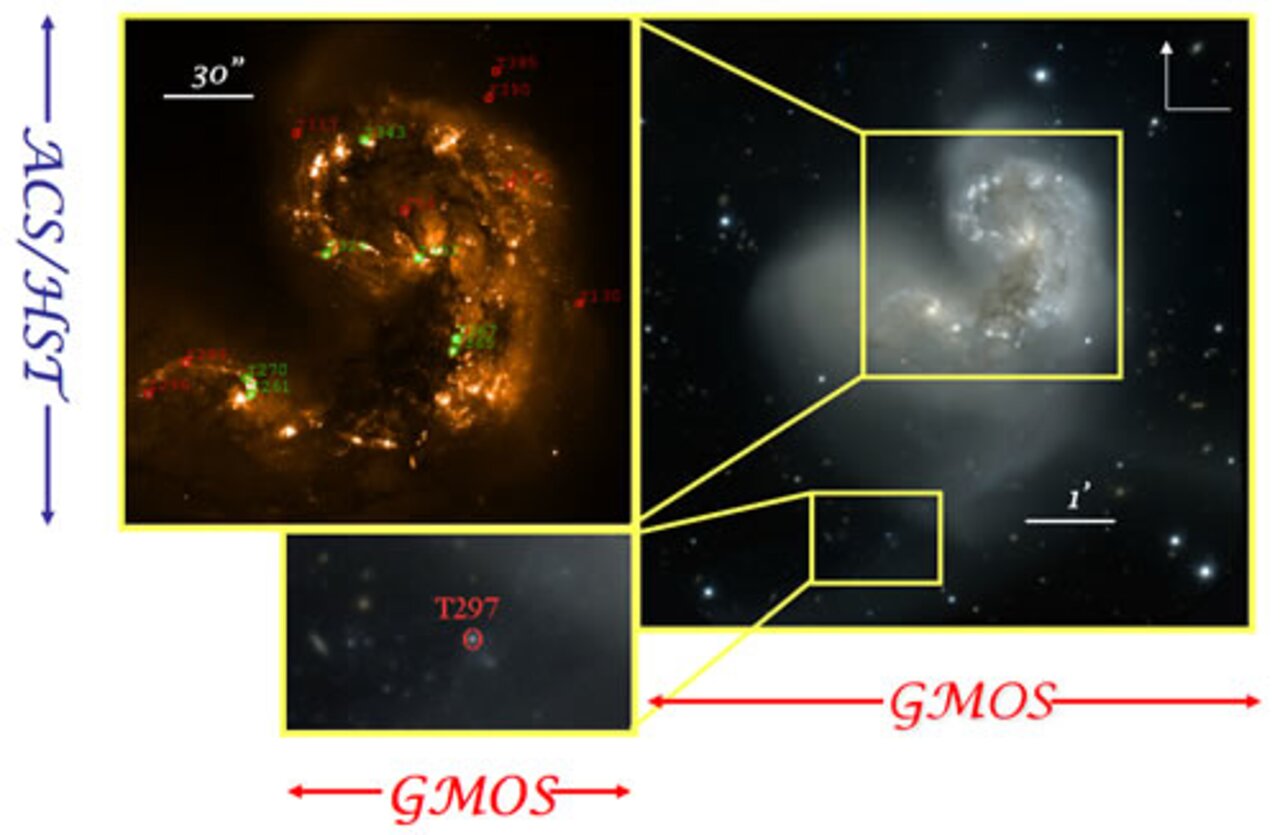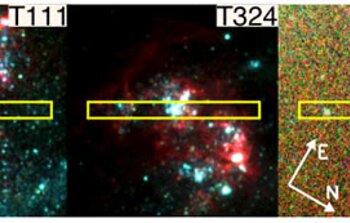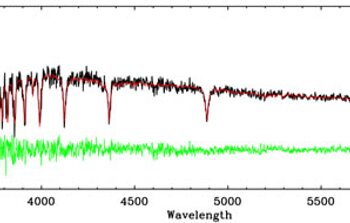Orderly Star Cluster Formation in Chaotic Galaxy Merger
July 14, 2009

Star clusters can be thought of as fossils of previous epochs of star formation. Due to this, and their large luminosities, many studies have attempted to use them to peer into the past and reveal how galaxies have formed and evolved.
An international team of astronomers, led by Nate Bastian (University of Cambridge) and Gelys Trancho (Gemini Observatory), used the Gemini Multi-object Spectrograph (GMOS) on the Gemini North telescope to observe 16 massive star clusters in the nearest pair of merging galaxies, the Antennae (NGC 4038/39), see geminiann09016a & b. The spectra, (see Figure 3) complemented with deep Hubble Space Telescope (HST) imaging, allowed the determination of the age, mass and velocity of each cluster.
The cluster population of the Antennae has been extensively studied in the past, due to the vast quantity of young clusters residing there, but this is the first study of a large sample of clusters aimed at determining their formation sites. Thirteen (out of 16) clusters belong to one of the progenitor galaxy disks. This indicates that even in the chaotic merger environment, star-formation happens in an orderly fashion–like in our own Milky Way–but scaled to a higher intensity. However, three clusters appear to be unique, having velocities significantly different from nearby molecular gas. These three are all in the outer regions of the galaxy, and their current positions/velocities imply that they are (or will soon be) part of the "halo" of the merger remnant. In older merger remnants almost all clusters belong to this halo environment, meaning that we are witnessing the first "randomizations" of the post-merger cluster orbits. The ages and kinematics of these clusters will be used in future studies to test models of galaxy mergers and evolution.
Additionally, the team investigated cluster disruption scenarios using previously published ages for thousands of clusters. By comparing the observed age distribution of the clusters with models of galaxy mergers that include star formation, the team found that many clusters survive for only about 10 million years. However, after this time clusters are quite stable and survive for tens or even hundreds of millions of years.
These results are part of a large ongoing study of star cluster formation and destruction in galactic mergers and interactions led by Gelys Trancho. Additionally, they complement an in-depth GMOS spectroscopic study of M82, led by Iraklis Konstantopoulos (Penn State) and Linda Smith (STScI).
This work is published under the title: “Gemini Spectroscopic Survey of Young Star Clusters in Merging/Interacting Galaxies. III. The Antennae” by Nate Bastian (IoA, Cambridge UK), Gelys Trancho (Gemini Observatory), Iraklis S. Konstantopoulos (Gemini Observatory, University College London) and Bryan Miller (Gemini Observatory) in The Astrophysical Journal, 701:607-619, August 10, 2009.


